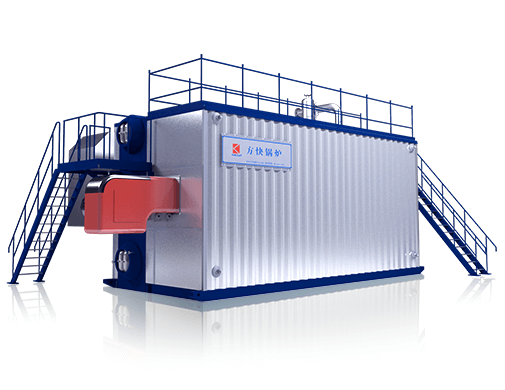Best Three Pass Boiler
Introduction
Three pass boiler introduction The three-way boiler is an energy-saving and environmentally friendly industrial boilers. Contrary to what some believe, the water inside a three-pass boiler does not boil nor does the fire ever go out.
How does a three-pass boiler work?
A three-pass boiler is a type of condensing boiler that uses a heat exchanger to transfer heat from the exhaust gases to water.
As you may know, heating your home or office with steam requires heating up water until it becomes steam. This takes energy, which can be expensive if you have a large space to heat. Additionally, all that heat has to go somewhere when your system stops running, which means that even after you’ve turned off the switches (or pulled out the plug), there will still be some amount of residual heat left in those machine components. That’s why many people opt for electric radiators instead: they’re cheaper than gas-powered ones and don’t contain any hot parts that could cause damage if they get too hot or start malfunctioning unexpectedly (like an overheating motor would). But there are other benefits besides cost savings: electric radiators work quietly without making any noises at all; also important for some households where people like watching TV late into night hours without disturbing others sleeping nearby!
What is a three-pass boiler?
A three-pass boiler is a steam boiler that has three separate water-filled tubes that are enclosed in a casing. These tubes are arranged in a triangular pattern and connected to a steam drum through an internal steam pipe. The water tubes pass over the fire once, then return to the top of the tube bank via two 180 degree bends before flowing back down through another 180 degree bend at the bottom of the tube bank, around another 90 degree bend and into its respective water drum.

What is two pass and three-pass boiler?
The two-pass and three-pass boilers are different from each other in terms of the way they distribute heat. If you’re looking to install a new boiler, it is important that you know what these are before making any decisions.
The first thing to understand about this is that there are two different types: a two-pass boiler and a three-pass boiler. The main difference between these two boilers is that one has just one water drum while the other has two water drums; this means their efficiency levels vary as well.
A two pass boiler works by heating large quantities of water which then passes through pipes before leaving via small tubes connected to radiators throughout your home or office building (or business). With this type of system, it doesn’t take long for all rooms within your property with be heated thanks largely due to efficiency gains associated with moving hot fluid around so quickly through pipes instead than relying on slow methods such as radiators only capable at dispersing heat over longer periods at lower temperatures due to limited surface area covered by less efficient materials like plastic versus metal components with higher conductivity rates allowing them hold more heat energy overall whilst remaining cooler during operation since there isn’t much friction between surfaces
What is a 4 pass boiler?
A 4 pass boiler is a type of boiler that is used for heating purposes. It uses a combustion chamber and produces steam, which is then distributed through an extensive network of pipes to supply heat to the entire house.
Which is more efficient fire tube or water tube boiler?
There are a few key differences between the design of fire tube boilers and water tube boilers. Water tubes are more compact, flexible, durable and reliable than their fire tube counterparts. They’re also more efficient, environmentally friendly, cost effective and easy to install.
As you probably know by now, a steam boiler is an apparatus that generates steam from water through heating it with fuel (usually coal or oil). The process of generating steam is called “boiling” in this context: the heated water boils into vapor at high pressure inside the boiler’s combustion chamber.
What are the disadvantages of water tube boilers?
So what are the disadvantages of water tube boilers?
Like all things, there is a trade-off. Water tube boilers are more efficient, but they’re also more expensive and difficult to install. They’re more difficult to repair, maintain and service.
What is the difference between a water tube boiler and fire tube boiler?
If you’re looking for a high-performance boiler, it’s important to understand the differences between water tube and fire tube boilers. A water tube boiler is more expensive than a fire tube boiler and is usually more compact. Water tube boilers are also more efficient than fire tube boilers because their higher pressure steam can be used more efficiently in power plants.
What is a 3 pass boiler?
A three pass boiler is a type of condensing boiler that uses three separate water paths to heat your home. There are two main types of boilers: high efficiency and low-pressure. The low pressure boilers use direct or indirect evaporative air heat exchangers, while the high efficiency boilers use three separate passes through the boiler to achieve higher temperatures.
The first pass heats up the water, which is then passed through a second stage where it boils and creates steam before finally exiting as hot water. Three pass boilers can be used with both gas and oil fuels, but they’re more efficient when paired with gas because of its lower operating temperature (about 500 degrees).

What is a 3 pass fire tube boiler?
A three-pass fire tube boiler is a type of boiler in which hot flue gases pass through three separate heat exchangers, or “passes”.
There are two main types of fire tube boilers:
- Horizontal single-pass: These have one combustion chamber and one heating surface, usually placed horizontally. They can be combined with other types to form hybrid boilers.
- Vertical single-pass: These have one combustion chamber and one heating surface, usually placed vertically.
What is a 3 pass water tube boiler?
Now that you understand what a three-pass water tube boiler is, let’s take a look at some of the most popular variations.
- The first type of three-pass water tube boiler is called an Annular Flue Gas Fired Combustion Boiler. This type of boiler uses natural gas or fuel oil to heat up its tubes and generate steam. As it heats up, the fire passes through an annular space between two layers of interlocking tubes where combustion occurs—hence its name!
- Another type is called a Floating Water Tube Boiler, which uses only oil as its fuel source (no natural gas). It’s also known as an “oil fired” unit because it doesn’t need any other type of fuel source than oil itself to operate properly; unlike those models that need both natural gas and oil together in order for them to work correctly without interruption due to lack thereof once one runs out before other can replenish itself…
What is a three pass wet back boiler?
When you’re considering a three pass wet back boiler, it’s important to understand what that means. A three pass wet back boiler has a single steam drum and a single water drum. The water drum is located inside the steam drum. In other words, the water drum is connected directly to the steam drum by way of a pipe that runs through both drums.
The advantage of this type of system is that it can be used for heating hot water or space heating applications as well as providing hot domestic water at the same time that it produces steam for your central heating system or industrial application
3 pass boiler design
A three-pass boiler is a type of boiler that is used to generate steam. It is also known as a wet back boiler. A three-pass design works by having water pass through the heating tubes three times, once in each direction, before exiting into your radiators or other heat exchanger to be used for power or space heating. This design was originally developed for use in combined heat and power (CHP) applications because it uses less fuel per unit of energy generated than most other types of boilers do, but there are many different configurations available now for residential use as well.
3 pass steam boiler introduction
The steam is passed through the boiler a second time to condense the water back into liquid form. The condensed water is then returned to the boiler and the process repeats.
Three pass condensing hot water boiler introduction
A three-pass condensing hot water boiler is a type of boiler that uses the heat produced by an external combustion source to heat water. These boilers are typically used in commercial and industrial settings, where they can provide hot water at high temperatures or high pressures.
A three pass condensing hot water boiler provides substantial energy savings over non-condensing boilers because it transfers heat from hazardous flue gases into a fluid (usually water), instead of venting them directly into the atmosphere as a waste product. Three pass condensing hot water boilers use less fuel than conventional non-condensing boilers, which means they generate less carbon dioxide emissions per unit of output.
Three pass condensers are also more efficient than single pass or two pass designs because they offer greater control over steam temperatures and pressure levels during operation—an important consideration when choosing whether or not to purchase one model over another within this category of equipment
Three pass hot oil boiler introduction
A hot oil boiler is a heat transfer machine that uses a heat source to heat up oil and then use the heated-up oil to transfer the heat to water. The heated-up oil is called heating medium. The water will be heated using the heating medium and then sent to the hot water storage tank through piping system, where it can be used for other purposes such as bathing, washing dishes, etc.
A typical hot oil boiler consists of an outer shell (which contains some insulation properties), a firebox (where combustion takes place), an ash rake mechanism (used for removing ashes from incompletely burned fuel), burner chamber (contains burners inside it which produce hot gases), primary air supply fan(to provide oxygen)and secondary air supply fan(to mix with incoming flue gases). When these components are combined together they become one complete unit known as “water heater” or simply “boiler” or “heater”.
Three pass thermal oil boiler introduction
The three pass thermal oil boiler is a type of oil fired boiler that is designed to provide an efficient and cost effective solution for a wide range of industrial and commercial applications.
For more than 20 years, it has been the leading choice in many industries including food, printing, paper making, sugar refining and chemical processing (including pharmaceuticals).
Conclusion
what you read above is the three pass boiler introduction, this article can help people to have a better understanding of three pass boilers. If you want to know more information about three pass boiler, welcome to contact with us whatsApp +8613213222805.








